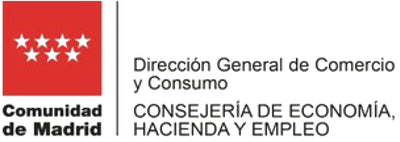Differences between organic cotton and conventional cotton
We strive to provide our customers with all the necessary information about the production of our cotton t-shirts and other garments. We want to be transparent about our margins and encourage more conscious and responsible consumption. Today, we will focus on a topic that generates many doubts: the difference between organic cotton and conventional cotton .
What makes organic cotton special?
Organic cotton is grown and processed in a sustainable and environmentally friendly way, unlike conventional cotton . The following practices stand out in the cultivation of organic cotton:
- No insecticides, pesticides or chemical fertilizers are used.
- The natural cycles of the earth are favored.
- No toxic substances are used in the spinning and production processes.
These practices benefit the environment and also ensure higher quality and durability of garments made from organic cotton.
Differences in the production process
Regarding the production of organic cotton , the following aspects stand out:
- No genetically modified seeds are used.
- Water use and retention is managed more efficiently thanks to the increase in organic matter in the soil.
- Organic fertilizers, such as rock dust and humus, are added instead of chemicals.
- Crop rotation is used to make the land more productive.
- No chemical fertilizers or pesticides are applied.
- Beneficial insects are used for pest control.
As far as the treatment and production of organic cotton garments vs. conventional cotton is concerned, no toxic substances are used during spinning and production, which increases the durability of the product. In addition, natural dyes are used, which are less aggressive on the garment and contribute to its resistance.

The importance of certifications
To ensure that a product is truly made from organic cotton , it is essential to have recognised certifications. At Minimalism, our garments are certified 100% organic cotton. This ensures that all the practices mentioned above have been followed, avoiding the use of insecticides, pesticides, chemical fertilisers and toxic substances throughout the process.
Benefits of organic cotton for the environment and health
Choosing garments made from organic cotton has multiple benefits for both the environment and people's health:
- Reducing environmental impact: By avoiding the use of chemicals and pesticides, soil, water and air pollution is minimized.
- Biodiversity conservation: Crop rotation and the use of beneficial insects promote biodiversity and ecological balance.
- Less exposure to toxic substances: Both farmers and consumers are less exposed to potentially harmful chemicals.
- Softer, more durable garments: Organic cotton produces fibers that are stronger and softer to the touch, resulting in higher quality and longer lasting garments.

Our commitment to local and sustainable production
In addition to choosing sustainable raw materials, at Minimalism we also care about where our clothes are made. We have chosen to produce in Portugal, less than 500 km from our logistics centre. This decision allows us to reduce the carbon footprint generated by the transport of the goods.
Part of the problem, but also part of the solution
We are aware that, as a company, we are part of the environmental problem. However, we also strive to be part of the solution, promoting more conscious and responsible consumption.
If we are all more aware of how the clothes we wear are produced, what their raw materials are, where they are made and what carbon footprint they leave, we will be doing our bit to make this world more sustainable.
We are committed to transparency and sustainability . By choosing our organic cotton garments you will be wearing quality and durable clothing, you will also be contributing to a more environmentally friendly future. Together, we can make a difference and have more impact on our wardrobe and on the planet.
Our best-selling organic cotton packs


















Comments
Minimalism said:
Buenas Paloma!
En este artículo puedes ver el informe completo sobre nuestros certificados: https://minimalismbrand.com/blogs/news/auditamos-el-impacto-de-nuestros-productos-extraccion-fabricacion-y-transporte-minimalism-brand
Saludos!
Paloma said:
Que certificados tenéis para certificar que es algodón orgánico? No se encuentran por ningún lado
José Manuel said:
Mati said:
Una pena que no se encuentren otros tipos de prendas de vestir de algodón orgánico.
Espero que en poco tiempo se confeccionen prendas de lencería que tan importante es el contacto de nuestra piel zonas íntimas para evitar las posibles alergias a otros tipos de tejidos más agresivos.
A tener en cuenta también lo importante que es ir mentalizandonos al uso de prendas respetuosas con el medioambiente
Jesús Llanos said: